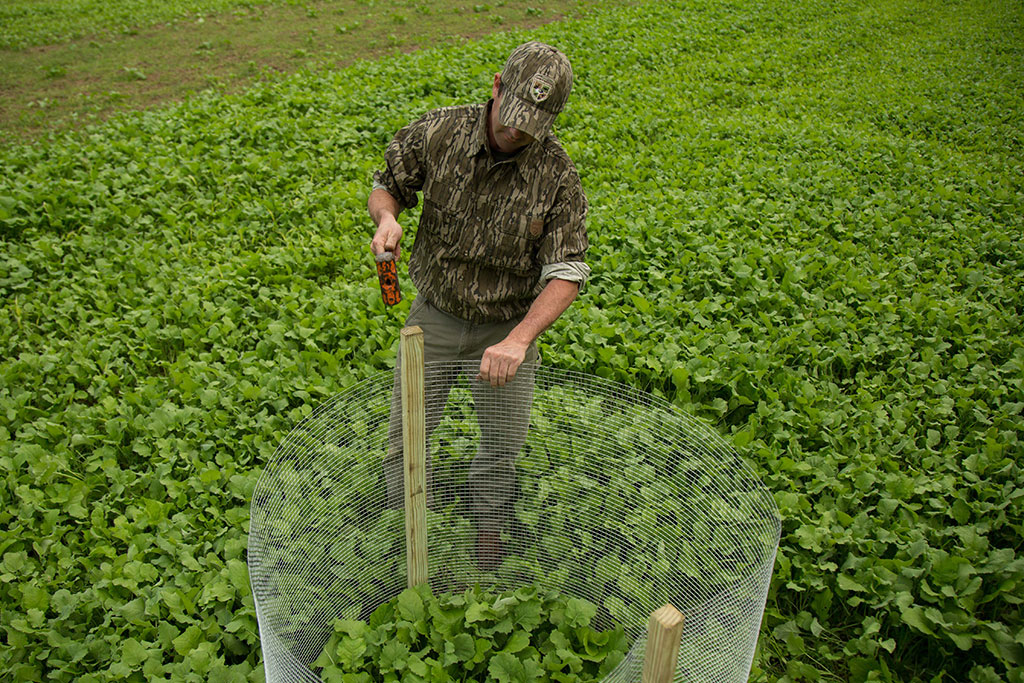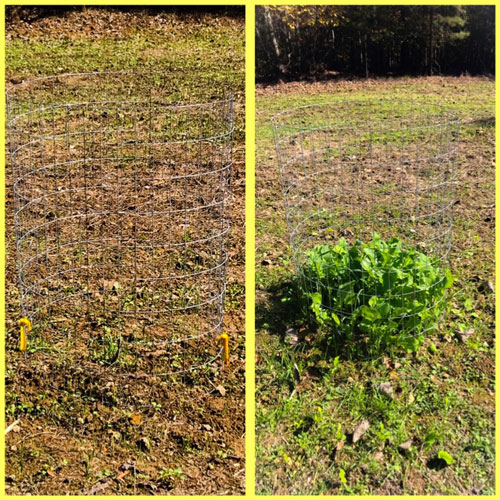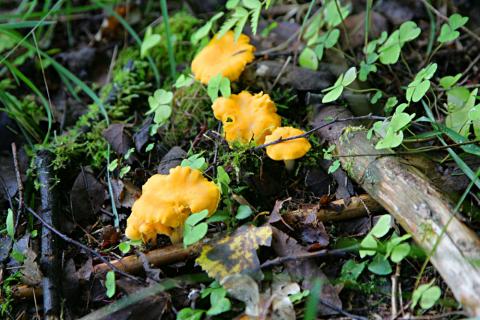Todd Amenrud

Why Use a Utilization Cage
How do you know if your food plots are working, or if you’ve planted enough acreage? Sure you can stake out a plot, and use the latest in surveillance equipment and “spy” in person. Or, you can blanket the area with trail cameras so you can see what’s happening when you’re not there. You can also keep harvest records of body weights and watch the browse pressure on your native vegetation, but the easiest way is to use a utilization cage.
Sometimes called an “exclusion cage” or “browse cage,” it’s simply a sturdy 3-foot diameter round of wire staked down so the deer can’t push it over. This way you can see what the deer are consuming on the outside of the cage and what the potential of your plants are on the inside. If the outside is all dirt, deer tracks and droppings, you need to plant more food or harvest more deer.
 Building a Utilization Cage
Building a Utilization Cage
Construction of a utilization cage is simple, inexpensive and can be accomplished in a very short amount of time. The dimension of the cage should be at a minimum of 4-feet tall with a 3-foot diameter. All you need is wire mesh, two stakes, and something to connect the wire mesh to the stakes (staples, ties, etc.). When selecting the wire mesh, be sure the holes are small enough to not only keep out deer, but rabbits as well. Stakes can be metal, plastic, or wood, but we prefer not using a big metal stake for safety reasons. After assembling all materials, it is as easy as forming your steel wire mesh into a cylinder cage and placing a stake at opposite sides and securing. The stakes should be driven far enough into the ground to ensure it will not be knocked over by grazing deer.
Material List:
- Steel Wire Mesh (minimum 48” x 9’6”)
- Two stakes – metal, plastic, or wood
- Staple gun or wire to secure mesh to stakes
Using a utilization cage will help determine the amount of browsing pressure, preference by wildlife, and what plants grow best on your site. This simple technique can save you time and money when planting your food plots.

 Building a Utilization Cage
Building a Utilization Cage





























